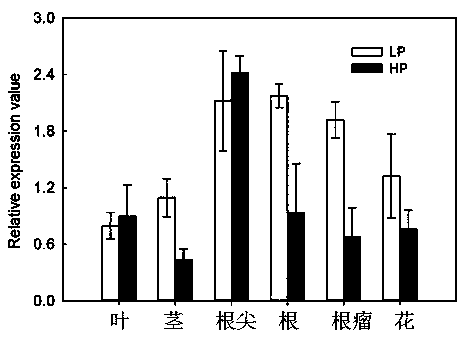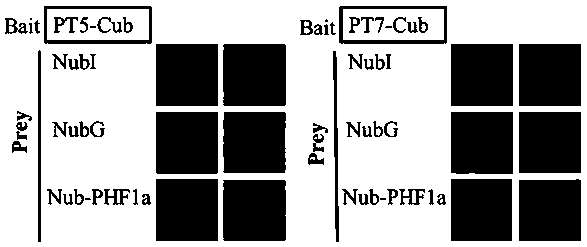Application of loading protein gene GmPHF1a of phosphorus transporter gene
A technology for transporting proteins and proteins, which is applied in application, genetic engineering, plant genetic improvement, etc., can solve the problems of unreported biological functions of soybeans, and achieve the effect of increasing plant biomass and yield
- Summary
- Abstract
- Description
- Claims
- Application Information
AI Technical Summary
Problems solved by technology
Method used
Image
Examples
Embodiment 1
[0028] Embodiment 1, determination of PHF1 protein
[0029] According to the sequence information of Arabidopsis thaliana and rice PHF1 gene, the candidate gene was screened by Blast in the soybean genome database Phytozome (http: / / www.phytozome.net / soybean), and the obtained gene sequence was carried out in the Arabidopsis thaliana database (TAIR) Blast was used to determine their possible functions, and Phytozome provided information about genes to determine their chromosomal location, and named them according to the Arabidopsis nomenclature (Bucher, 2007). The amino acid sequence of soybean PHF protein was compared with the amino acid sequence of Arabidopsis thaliana and rice PHF1 protein using GENEDOC software for multiple sequence alignment.
[0030] In the published soybean genome database, through homology comparison, it is predicted that there are two members of the soybean PHF phosphorus transporter family, named GmPHF1a and GmPHF1b. The results of multiple sequence a...
Embodiment 2
[0031] Embodiment 2, GmPHF1a gene expression pattern
[0032] The nutrient solution cultivation method was used for planting. One week after the seedlings were raised, the seedlings with uniform growth were selected and soaked in the fresh rhizobia bacterial solution for 30 minutes, then transplanted, and moved into bread boxes filled with different nutrient solutions. The test was a single factor, including low phosphorus (LP: 5 μmol / L) and normal phosphorus (HP: 250 μmol / L) two phosphorus levels; all were low nitrogen (100 μmol / L) and inoculated with rhizobia. 4 replicates. Leaves, stems, root tips, roots, nodules, and flowers were harvested 55 days after transplanting; samples were stored at -80°C for RNA extraction. soybean PHF1a Gene quantitative PCR primer sequences are:
[0033] GmPHF1a-F: TCAGCGATCTCCGAAGAGCTCCA;
[0034] GmPHF1a-R: CGGGCCTCCGAATCCACGAC;
[0035] The quantitative PCR procedure is as follows: the cDNA obtained by the reverse transcription of the ...
Embodiment 3
[0039] Example 3, the subcellular localization of GmPHF1a
[0040] 1 Vector Construction
[0041] according to GmPHF1a Design primers for the full-length cDNA sequence, and add Bam HI restriction site, the primers are as follows:
[0042] PHF1aF: GTggatccATGCTCTCATTTTCGTCTCTGACAT;
[0043] PHF1aR: GTggatccTCagTCACATATCTACTGGCCCCCAA;
[0044] GmPHF1a was fused to the pBI121-GFP vector. cDNA from wild-type soybean root was amplified with Ex Taq (TAKALA, Japan) GmPHF1a For the gene fragment, the PCR product was recovered and connected to the pBI121-GFP vector with the corresponding enzyme digestion, and the clones were selected for enzyme digestion detection and sequencing, and the correctly fused clones were saved for future use. After obtaining the required recombinant vector, transform the plasmid into Agrobacterium GV3101 competent cells, and shake the bacteria for later use.
[0045] 2 Tobacco Transformation
[0046] The GV3101-positive clones containing the recombi...
PUM
 Login to View More
Login to View More Abstract
Description
Claims
Application Information
 Login to View More
Login to View More - R&D
- Intellectual Property
- Life Sciences
- Materials
- Tech Scout
- Unparalleled Data Quality
- Higher Quality Content
- 60% Fewer Hallucinations
Browse by: Latest US Patents, China's latest patents, Technical Efficacy Thesaurus, Application Domain, Technology Topic, Popular Technical Reports.
© 2025 PatSnap. All rights reserved.Legal|Privacy policy|Modern Slavery Act Transparency Statement|Sitemap|About US| Contact US: help@patsnap.com



